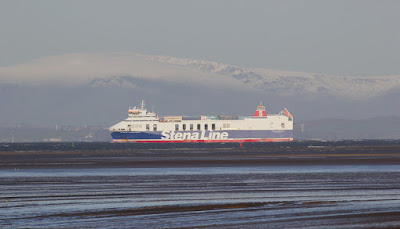“Welcome to Manchester” crackled the pilot over the intercom without a hint of irony. “The temperature outside is ten degrees and it is raining quite hard. Be careful as you step onto the air-bridge as it is wet and slippery”.
After two weeks in the endless sunshine of Lanzarote we arrived home with a soggy reminder of why we felt the need for a change from the UK winter of 2015/16. Speeding though the darkness of Sunday evening the roadside pastures glistened wet and deep. Nothing much had changed.
After a day or two of domestic catch up and readjustment I’ll be ready for a spot of birding, but in the meantime came news of a couple of recaptures/recoveries.
While I was busy sunning in Spain, and despite the poor weather here, Andy braved a couple of ringing sessions at Oakenclough. It was the ringing site which provided an interesting Goldcrest movement of last autumn and when the migration of Goldcrests was particularly noticeable. During August, September and October of 2015 we caught 73 Goldcrests at the site.
We ringed HDN315 a juvenile male on 9th September whereupon it was recaptured 41 days later on 20th October by other ringers at Rollesby, Gt Yarmouth, close to the Notfolk coastline. This is a distance of 319kms.
Autumn movements of British Goldcrests show a distinct northwest to southeast axis, the likely origins of the birds being the extensive conifer forests of Scotland and Northern England and the southerly destination of the birds generally unknown. Small numbers of Goldcrests are proven to have crossed to the near continent where they winter. Perhaps our Goldcrest was on its way to France or Belgium to escape the British winter?
Goldcrest - Oakenclough to Norfolk
Goldcrest
During the summer of 2015 we made four visits to a Sand Martin colony at Cockerham where we ringed 169 Sand Martins and one or two other bits and pieces.
Sand Martin number Z470329,a male in breeding condition on 30 June 2015 was subsequently recaptured by French ringers on 30th July, exactly a month later at Roseliere, Chenac-Saint-Seurin-d'Uzet, Charente-Maritime, France.
Sand Martin
Sand Martin - Cockerham to Roseliere, Chenac-Saint-Seurin-d'Uzet,
This is a distance of 949 km and at 172deg, almost exactly due south from Cockerham. Sand Martins are some of our earliest arriving migrants during March and April and are often gone from the UK by August, especially so during 2015 when a poor breeding season meant that this Sand Martin colony dispersed early with little noticeable breeding success.
By late July our Sand Martin Z470329 had further to travel before reaching its wintering quarters of North Africa.
There should be more local news soon and maybe some birds and views from Lanzarote. In the meantime Another Bird Blog may have to take a little sundowner this evening to help the recovery along by pretending that summer is heading this way.
Lanzarote - January 2016
Yellow-legged Gull - Lanzarote
Log in soon. Linking today to Stewart's World Bird Wednesday.



















































.jpeg)











.jpg)












